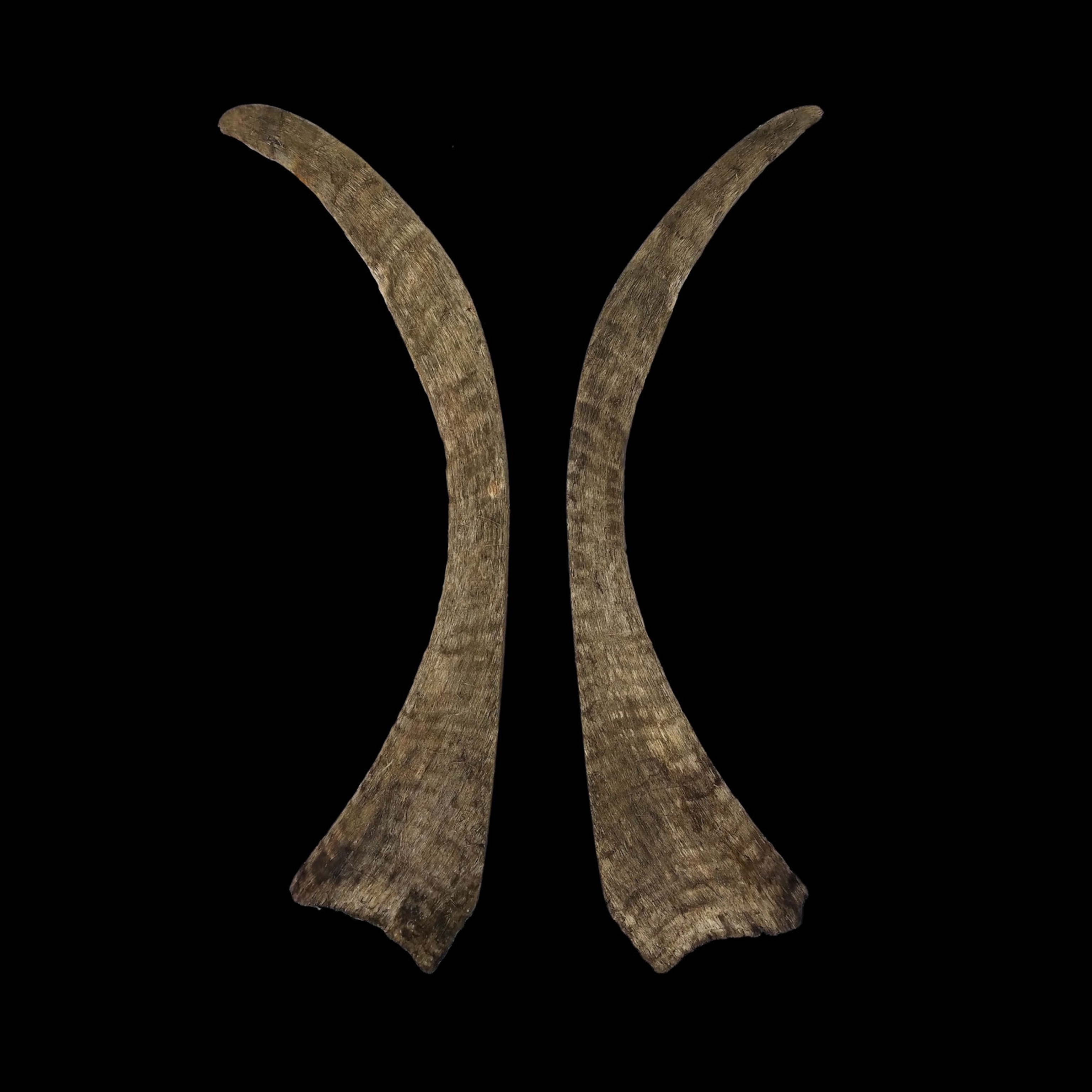
Can Fake Rhino Horn Stop the Poaching of a Species at Risk?
Opting for carvables instead of powder, a U.S. biotech startup forges ahead with controversial plans to sell fake rhino horn.
Fake rhino horn cell phone cases coming to a store near you? It may sound strange, but that’s what one San Francisco-based startup has in mind—and it thinks such products can save the animals.
The company, Pembient, plans to bioengineer fake rhino horn that artists could carve into lifestyle items such as jewelry, libation cups, and chopsticks, according to CEO Matthew Markus. Then the merchandise will be sold in China and Vietnam, where demand for rhino horn fuels rampant rhino poaching in Africa.
Pembient hopes synthetic horn—priced at about one-eighth that of the reported $60,000-a-kilogram that genuine horn commands—will flood the market. Prices for the real thing would fall, goes the argument, curbing the economic incentive for poachers—and helping save rhinos in Africa.
Poachers have targeted rhinos in recent years at unprecedented rates. Last year, they slaughtered a record 1,200 in South Africa—home to most of the world’s rhinos—and have wiped away an increasing number of them in the country each year since 2008. (That’s after a rumor that rhino horn had cured a Vietnamese politician’s cancer, and demand in the country skyrocketed.)
Pembient emerged on the startup scene in January, when biotech incubator IndieBio decided to fund the venture and offer it a spot in its inaugural class. By isolating the gene for rhino keratin, the chief ingredient in wild horn (and in human hair and fingernails), Pembient says it’s managed to 3-D print genetically identical knock offs.

At first the company planned to focus on selling synthetic rhino horn powder before offering larger products. Several companies were interested in buying the powder to mix with beer and skin cream, among other things. The items would have been marketed to East Asian consumers, who tout rhino horn as a status symbol and a sign of strength. Some mistakenly believe that it can heal everything from hangovers to cancer.
But many conservationists attacked Pembient’s idea, asserting that fake rhino horn won’t solve the poaching problem and could even make it worse. They say that rhino horn powder-infused products could open more markets for illicit horn. “These are entirely new uses of rhino horn that will reach an entirely new audience,” Cathy Dean, the international director of Save the Rhino, told World Finance in September.
For now, the company is shifting its emphasis away from synthetic powder because, as Markus says, “we’ve gotten a lot of pushback. The carving process and the durable goods market seems very interesting to us because it’s been around for such a long time and it’s something that people maybe understand a little bit better.” He also thinks that intact horn is “what the market really desires” because it’s the “ultimate marker of authenticity.”
A recent trip to Vietnam helped influence Markus’s decision to jump straight to “carvables,” the scraps of which he says he learned end up in the medicinal market anyway.
The Backlash Continues
“I frankly don’t see that it’s any better, to be honest,” says Susie Watts, a consultant for WildAid and co-chair of the Species Survival Network Rhino Working Group, referring to Pembient’s move to put faux powder on the back burner. While she’s aware that people buy rhino horn jewelry, Watts has never heard of rhino horn cell phone cases and chopsticks.
But opposition to Pembient’s synthetic horn plans extends beyond the possible new market it could create. “There’s very little, if any, relief on wild populations when we see commercial farming develop or commercial trade of a protected species,” says Douglas Hendrie, manager of the wildlife crime and investigations unit for conservation group Education for Nature - Vietnam. “The wild trade continues right alongside.”
Hendrie points to China’s legal one time sale of 73 tons of ivory in 2008, which arguably fueled the current elephant poaching crisis. China’s legal tiger farms have also stoked demand for wild tiger parts, according to wildlife activists.

Patrick Bergin, CEO of the African Wildlife Foundation, also believes that inserting fake horn into the market could counteract efforts to educate people about why they shouldn’t buy wild horn, a strategy most activists push as the best way to reduce demand.
“If you start to nuance that message with some rhino horn is good, some of it is bad, some of it is legal, some of it is illegal,” he says, “you lose people and lose the clarity of the message.”
There’s also concern that fake horn could increase the workload for law enforcement in countries already struggling to contain the illicit trade. According to Hendrie, Vietnam doesn’t have the enforcement capacity to regulate the black market along with the legal one.
As for the United States, the Fish and Wildlife Service, which enforces wildlife law, hasn’t taken a stance on Pembient’s venture. Spokesman Gavin Shire says the agency is “looking at this and the implications of it.” One consideration could be the Rhinoceros and Tiger Conservation Act of 1998, which bans the export of any substance intended for human consumption that’s labeled or advertised as containing “any substance derived” from a rhino.
Markus says he’s working with regulatory agencies to address any legal concerns. He expects he’ll have about a year to figure it out, while his team nails down the science for constructing faux horn that’s as carvable as real rhino horn. In the meantime, the CEO knows he’ll have to contend with more opposition.
This story was produced by National Geographic’s Special Investigations Unit, which focuses on wildlife crime and is made possible by grants from the BAND Foundation and the Woodtiger Fund. Read more stories from the SIU on Wildlife Watch. Send tips, feedback, and story ideas to ngwildlife@natgeo.com.








